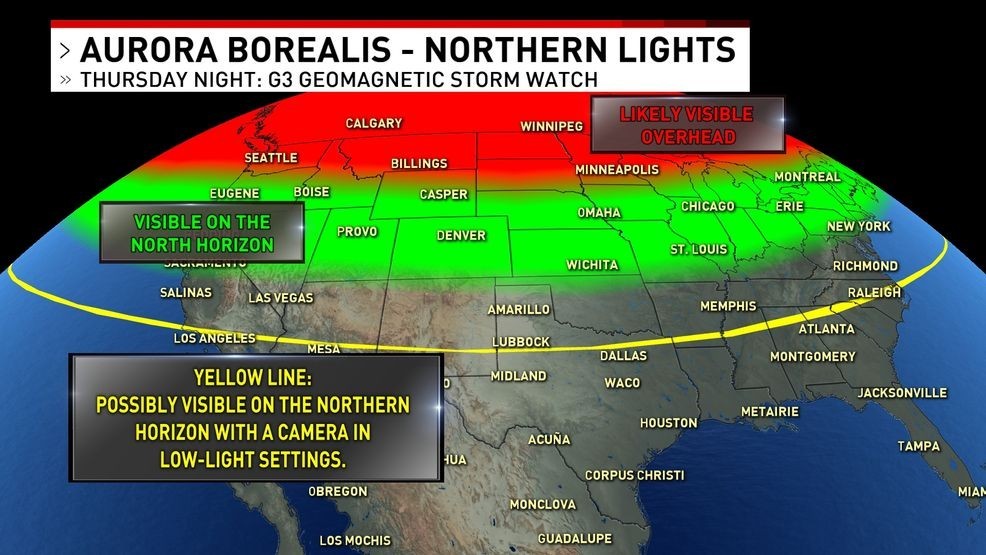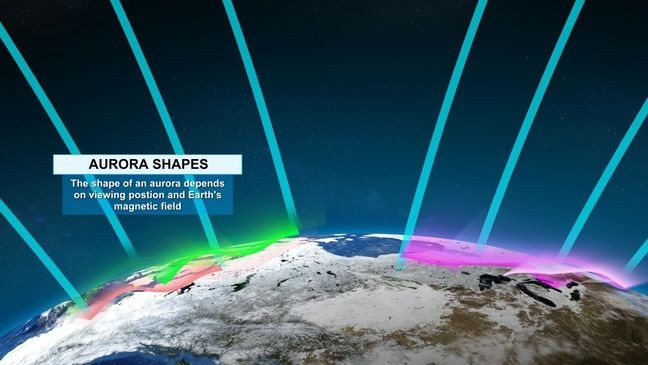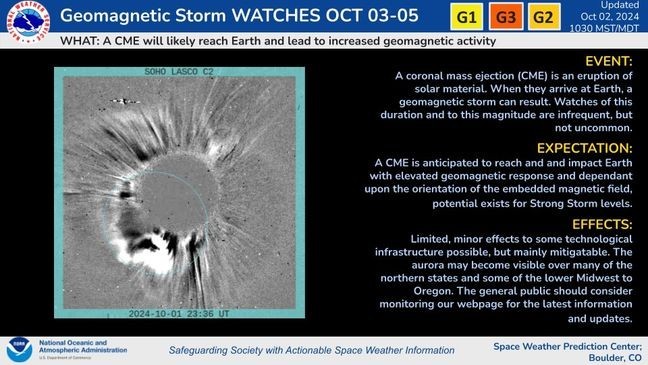NOAA predicts vibrant northern lights as far south as Nebraska
AMARILLO, Texas (KVII) — A G3 geomagnetic storm watch has been issued by NOAA's Space Weather Prediction Center from Oct. 3 through Oct. 5 with the peak of the storm anticipated Thursday night into Friday morning.
NOAA's Space Weather Prediction Center made a statement about the solar flare that sparked the geomagnetic storm watch earlier this week. Their description reads as follows:
"A large X7.1 (R3 - Strong) solar flare erupted from NOAA/SWPC Active Region 3842 on October 1st, 2024. This was the second strongest flare thus far in Solar Cycle 25, only bested by an X8.7 flare on May 14th of this year. This latest flare was observed by the GOES-16 satellite X-ray sensor (XRS) and peaked at 6:20 pm EDT (2220 UTC). The flare was impulsive in nature but was associated with some USAF solar radio observatory reports that may indicate a possible coronal mass ejection (CME) could be associated with the flare."
A coronal mass ejection was directed toward Earth from this solar flare and one thing it will do is disrupt high-frequency communications bands. If the CME arrives during the overnight hours it could paint the night sky with vibrant colors Thursday night across the northern Hemisphere.
This rare phenomenon, usually reserved for higher latitudes, may be visible as far south as Nebraska, Iowa, & Michigan with the naked eye.
We could even get the chance to witness it in the Texas Panhandle given this year's track record or northern lights displays.
The spectacle hinges on the CME's actual arrival time. If it impacts Earth during the day for the United States, then the northern lights would be views from other countries like Russia, Norway, Switzerland, etc. If it arrives while it is dark here, we should have a great chance to view the display in the northern U.S.
Locally in the Texas panhandle, we have been in a very quiet weather pattern so clear skies are likely if this event does pan out in our favor.
The Northern Lights were seen in the Texas Panhandle multiple times over the last 18 months as the sun reached its solar maximum.
- March 23 - Photographer catches aurora borealis in Texas panhandle
- April 23 - Rare repeat: Northern lights visible in Texas panhandle for second time in a month
- May 10 -Northern lights spotted in the Texas Panhandle
- September 16 - Brief display of the northern lights in the Texas Panhandle.
We encourage you to share your pictures and videos with us through Chime In so we can all document this potentially spectacular event.




